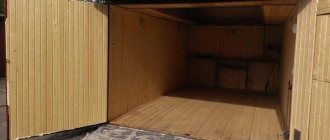Lightning is a monstrous phenomenon in its destructive power. The current strength in the charge, which breaks the stormy sky for just a fraction of a second, reaches half a million amperes, and the voltage amounts to tens and hundreds of millions of volts. Anything that lightning strikes, with the exception of metal and other conductors, instantly heats up and, if it reaches a critical temperature, catches fire. To prevent this from happening, it is necessary to divert lightning from a building or other object to the ground, which requires a lightning rod, a current collector and a grounding loop.
High-rise buildings, administrative and commercial buildings, factory workshops, television towers, monuments - all these structures must be equipped with lightning protection to avoid damage. The situation with private houses is completely different - cottages or dachas with installed lightning rods are rare. The reasons for this are different. Some owners are sure that the lightning rod, on the contrary, will attract lightning; someone believes that he is protected by a cell tower installed a kilometer from the cottage; someone simply saves in the belief that the likelihood of a lightning strike on the house is too small. Let's figure out which of this is true, and when lightning protection is needed in a private house, and when you can do without it.
Is a lightning rod needed on the roof of a private house?
From a safety point of view, a lightning rod is always needed - even if the probability of being struck by lightning is negligible, lightning protection and grounding will reduce it even more. That is, it definitely won’t get worse. But the price of a lightning rod with installation starts from 30,000 rubles, and not everyone is ready to spend this money on reducing the likelihood of a lightning strike by thousandths of a percent. Therefore, they usually talk separately about situations in which a lightning protection device is mandatory, and separately about cases when installing a lightning rod is just a recommendation.
Lightning protection of the roof is absolutely necessary:
- when the house is located in a cottage community, village, urban private sector, or stands alone and there are no high-rise buildings nearby;
- when covering the roof with any types of metal coverings, including corrugated sheets and metal tiles;
- when the house is built on a hill or there is shallow groundwater underneath it;
- if the building has a lot of working electronics or powerful equipment installed.
If any of these conditions are met, the need to install lightning protection is not a matter for discussion, since the risk is quite high. And the higher the house is built, the higher it is: in the southern regions, thunderstorms occur much more often than in the northern ones, therefore, the likelihood of lightning hitting the house increases. The map below clearly shows how the number of days with thunderstorms increases as you move south, with a few clusters near the mountain ranges.
Of course, no one can force you to install a lightning rod on your house - this can only be officially required for public, multi-apartment, commercial and industrial buildings. If we are talking about a private house, lightning protection is left to the discretion of the owner. But not making a lightning rod in a private house in such a situation is the same as not treating a wooden beam for a frame house with fire protection and making closed wiring in it.
It's a completely different matter when your home:
- Located in close proximity to dominant heights : cell towers, water towers, high-rise buildings. But keep in mind that the immediate proximity is not a kilometer or even 500 meters. This is when the farthest point of the house is located no more than 1.2 × h from a high-rise object, where h is its height. That is, with a base station height of 100 m, each corner of your house should fall into a cone with the top at the highest point of the tower and a base with a radius of 120 m.
- Built in a forest with tall trees . The protection radius from one tree, if it is not a sequoia, is not enough to cover the entire house, but there are a lot of trees in the forest. Sometimes, for better protection, a lightning rod is attached to the top of the tallest tree near the house.
- Located in an area where thunderstorms are rare . In numbers, these are areas with an average annual duration of thunderstorms of up to 20 hours. In the map above, these are the red and pink zones.
In all these situations, the risk of being struck by lightning is very small, so many home owners do not do lightning protection, relying on chance. On the one hand, the probability is really low. On the other hand, the losses if “something goes wrong” will be very large: even if the house does not catch fire, then all the electronics, including the heating boiler control units, will definitely burn out. How justified such savings are, each home owner decides for himself.
Lightning is unpredictable, although rare, but it can strike a building protected by a commanding height.
Detailed instructions for reliable grounding of a building's lightning protection system
To guarantee your safety from an electric lightning discharge, you will need to solve two problems: catch the discharge itself and send it to a safe place, namely, ground it. First, let's deal with the grounding structure.
The most popular grounding structure is considered to be three buried conductors located at the corners of an equilateral triangle. But, as practice shows, this is not an axiom; it is important that the device ensures safety. Judging by the requirements of the PUE, the main parameter is that the design resistance should be no more than 4 ohms.
On average across the country, these conditions are met by 3 grounding elements, which are buried 3-5 meters. If the resistance is more than 4 ohms, then one or more additional pins can be connected. This measure will help reduce resistance.
Placement of grounding elements
A simple rule, which no one has canceled, says: the distance between the conductors must at least correspond to the double depth of their driving. The most compact option is an equilateral triangle. However, it is possible to place the pins in a line; the instructions for grounding and lightning protection do not prohibit this, but provided that the requirements for the distance between them are met.
Another important issue is the material of the elements. Here the PUE comes to the rescue again, where three types of materials are presented: copper, black and galvanized steel. There are also specific requirements for their cross-sectional area:
- The diameter of a round pipe made of black steel must be at least 16 mm, copper and galvanized - 12 mm. The Rules also indicate a corner, but only made of black steel.
- The cross-sectional area for black steel is 100 mm2 with a wall thickness of 4 mm. Restrictions for galvanized steel are a cross-sectional area of 75 mm2 with a wall of 3 mm. Accordingly, for copper – 50 mm2 at 2 mm.
The fittings, as some try to argue, are not suitable for organizing a grounding loop - they quickly rust, and the hot top layer affects the electrical parameters. Many people try to protect metal from corrosion using special means, but this cannot be done for the simple reason that such grounding is absolutely useless. After all, the coating isolates its elements from the ground.
How to properly connect grounding elements
There is no need to talk about an ideal solution, but the fact that the connection must be reliable and durable is not controversial. Ferrous metals are usually connected using electric welding; the bolts here will be the weak link - corrosion will only disrupt the conductivity. Without a doubt, the weld is also not an ideal solution, but it can be treated, but, of course, not with wood or vinyl siding paint.
It is impossible to weld galvanization - the protective layer at the seam site is broken. Here you will have to use special connectors, which are also made of galvanized steel. Copper elements are also connected in a similar way. Of course, there are soldering technologies for this, but such pleasure will not be cheap.
Installation of the grounding loop of a lightning protection system: main stages
So, the material has been chosen, the connection method has been decided, all that remains is to mount the structure. To do this you need to perform a number of operations:
- Select a location for the grounding pins. The element closest to the foundation of the house must be at a distance of at least 1 meter.
- At the locations of the pins, dig holes 0.5-0.8 m deep, and then connect them with ditches.
- Drive the grounding elements with a sledgehammer just below the initial ground level.
- Connect the pins together using tape. Keep in mind the cross-sectional area and thickness of the steel plate.
- Fill the ditch with soil and compact it.
It is highly advisable to check the resistance of the structure before backfilling. We remember that it should not exceed 4 ohms.
How lightning protection works and why it is effective
A lightning rod on the roof of a house effectively protects it from lightning strikes. But how does this happen? Why is a thin metal pin connected to ground capable of withstanding discharges of millions of kilowatts? To understand how a lightning rod works, you need to understand where lightning comes from in the first place, and why in some places they strike hundreds of times more often than in others.
The birth of lightning and the “choice” of a target
When it rains, an electric field is created in thunderclouds. Positive charges in the cloud move upward, and negative charges accumulate at its lower boundary. If the field is strong enough, it causes an avalanche-like ionization of the air, which causes a positive charge to accumulate at the surface of the earth. As a result, the tension between the earth and the clouds begins to increase until it reaches critical levels. It is at this moment that a discharge occurs - lightning. Sometimes lightning can strike from the upper layers of clouds, then it will be attracted to negatively charged objects. But that rarely happens.
The discharge always occurs where the tension is greatest. That is, high objects are at risk, since there is less distance between them and the clouds, and any places near which positive charges easily accumulate: reservoirs, metal structures, power lines.
However, it is impossible to predict exactly where and when lightning will strike. It is only known that lightning moves along the ion channel between the clouds and the target object, and after the strike this channel does not disappear immediately. Therefore, if a large charge has accumulated in thunderclouds, lightning can strike the same place several times. Moreover, according to a study conducted by physicists from the University of Arizona, with a probability of 67%, the second lightning will strike within a radius of several tens of meters from the site of the first strike.
And although it is impossible to predict the exact location where lightning will appear, you can protect all structures in the risk zone with the help of a lightning rod.
Lightning protection device for a building: understanding the details
Lightning protection of a private home is a simple system that traditionally consists of three elements:
- lightning rod on the roof or, as it is correctly called, lightning rod;
- down conductor or grounding conductor;
- grounding the house.
In the last 15-20 years, lightning protection at home has begun to include a fourth element - protection of the home’s electrical network from power surges and impulse noise. This is an optional, but desirable addition to the system, which allows you to avoid damage to sensitive electronics due to lightning striking not only the lightning rod on the roof of the house, but also just 1-2 km from the building.
Basic diagram of a lightning protection system for a private house
Lightning protection for a home should force lightning to bypass the building and slide down the conductor into the ground without causing harm. This is her main task. But there is an additional one: lightning protection of structures, in principle, reduces the likelihood of a discharge entering buildings by reducing the voltage near the lightning rod.
Lightning rod
A lightning rod is the first element of lightning protection, the task of which is to “meet” lightning and prevent it from striking an unprotected roof. The lightning rod is placed in the most vulnerable part of the house: on the pediment, gables, turrets, combined with a weather vane. A lightning rod for a country house is usually simply mounted at the highest point of the gable in the center of the ridge. The lightning rod on a large cottage is either made in the form of a cable stretched between metal rods along the length of the roof, or placed higher - on a special mast several meters high.
The operating principle of the lightning rod is simple. It is a sharp conductor, which is why the field strength around it is very high. A strong electric field leads to the appearance of a corona charge near the tip of the lightning rod, which causes strong ionization of the surrounding air. As a result, the tension between the ground and the lower edge of the clouds at the point where the lightning rod is installed is reduced and, therefore, the likelihood of a lightning strike is reduced. However, at a high altitude of the house, the discharge effect is very insignificant, but the corona charge still allows you to intercept lightning on approach and force it to go through the lightning rod into the ground, and not along the roof rafter system.
Types of lightning protection are divided depending on the type of lightning rod used in the system:
- Metal pin . The most common and oldest type of lightning rod. As a rule, this is a steel metal rod with a length of 0.5 to 4 m and a diameter of 10-12 mm. Copper is better suited for making a pin lightning rod, but in this case the entire lightning protection will have to be made from copper rods and plates, and this is expensive.
- Cable lightning rod . This is a steel cable with a diameter of 10 mm, which is stretched along the ridge of the roof and its upper breaks. Such a lightning rod is made on roofs of complex shapes and large areas, since the height of the lightning rod is not sufficient to provide reliable protection of the entire building.
- Mesh lightning rod . This type of lightning protection is used on large commercial and public buildings. In this case, several lightning rods are installed at once in vulnerable parts of the roof and connected to each other with cables. The result is a conductive mesh that protects the entire roof of the building.
Regardless of the type of lightning rod, the quality of its connection to the down conductor is critically important. Remember: millions of volts will pass through this assembly, so any flaws during fastening can lead to melting of the connection with all the ensuing consequences.
Down conductor
A current conductor is an ordinary conductor made of steel or copper with a diameter of 6-10 mm. Its job is to safely deliver the charge to the ground loop. The down conductor is attached to the lightning rod by welding or a special bolted connection, but it must be welded to the grounding loop.
The junction of the down conductor rod and the grounding plate
For greater safety, the down conductor is lowered from the roof along a blank wall, if possible on the opposite side from the entrance to the house. If the building does not have blank walls, the down conductor is installed as far as possible from the windows. When laying it, it is secured so that the wire does not touch the walls and roof surface. In this case, the number of bends in the down conductor should be minimal. Ideally, there should be only two of them: a turn when the wire is lowered from the roof and a turn near the ground to connect to the ground loop.
Grounding
A grounding loop is needed to dissipate lightning energy in the ground. Typically these are three conductors lined up and connected into one circuit by a fourth horizontal conductor. This entire structure is buried away from the house, for example, near a fence.
Sometimes the down conductor is connected to a ready-made grounding loop of the building. This is mistake. If you use general grounding, a private home may receive an additional risk factor instead of reliable protection. The fact is that the energy of a lightning discharge is so great that it is not immediately dissipated in the ground. And in these few seconds, electrical appliances grounded to the same circuit can be seriously damaged. Therefore, the grounding of the house and the circuit for lightning protection not only cannot be combined, but it is also advisable to place them on different sides of the house as far as possible from each other.
The ground loop can be not only linear, but also triangular. There is no particular difference between these designs in terms of efficiency. The question is rather about ease of installation: a triangular contour is made in cases where it is not possible to dig a long trench. The grounding connection diagram in the house in both cases is shown below.
Home electrical protection
Most private homes already have protection against overvoltage, short circuits and other abnormal operating conditions of the electrical network. Therefore, lightning protection usually comes down to installing only one class of equipment - surge protection devices (SPDs) or arresters.
Unlike a conventional overvoltage relay, an SPD will not be triggered by a drop of 10, 50 or 100 V. Its task is to save the electrical network from a catastrophic increase in voltage when a lightning strike occurs either in the house itself, or next to it, or next to the overhead line from which yours is powered. cottage. In such a situation, the voltage in the network can rise to several thousand volts in a split second, which will disable all equipment if it is not hidden behind an SPD. A simple surge relay will not help much with such a power surge - it will most likely melt itself and burn along with the rest of the equipment.
To ensure reliable protection, arresters are mounted in three levels:
- A first-class module is placed on the input switchboard in the house, and it extinguishes the main discharge.
- The second class module is installed in the distribution panel in the house, and it takes on the residual impulse.
- A third class module is installed for a specific consumer. Typically these are sensitive electronics or life-critical equipment, such as ventilators in medical centers.
To reduce the cost of the system, only second-class SPDs can be used. But without a filter in the form of a first-class arrester, it can burn out.
Where do lightning come from?
In a simplified way, the physics of the process can be described as follows: the source of lightning is cumulonimbus clouds .
During a thunderstorm, they turn into a kind of giant capacitors . On the upper plus part, a huge positively charged ion potential accumulates in the form of ice crystals, and in the lower minus area, negative electrons accumulate in the form of water drops.
During the discharge (breakdown) of this natural battery, lightning appears between the ground and the thundercloud - a huge electric spark discharge :
This discharge will always flow along the circuit of least local resistance to electric current. The fact is well known and verified. Such resistance usually occurs in high-rise buildings and trees. Most often, lightning strikes them.
How to make a lightning rod in the house
If you know how to work with a welding machine, then you can easily make a lightning rod with your own hands. It is also easy to install a down conductor and ground it. The only place where it is better to seek the help of a specialist is installing surge protectors in the panels of the house.
The simplest lightning rod can be made from a piece of reinforcement with a diameter of 10 mm or more and a length of 2-6 m. The pin must be sharpened on top with a grinder and attached to the pipe or gable with clamps or anchor bolts. The second option for a lightning rod is a 3/4˝ steel pipe welded at the edges. The main thing is that the welding is of high quality. Self-manufacturing of a lightning rod allows you to save $60-100 on a lightning protection device - this is the price at which you can buy an industrially produced lightning rod.
The current conductor is made of a steel rod with a diameter of 10 mm. It is clear that such a route will have to be made from separate parts, welding them together or fastening them with special adapters. This is inevitable, but it is necessary to think through the down conductor path so that there are as few rod connections as possible. It is better to order the rod already bent, so as not to bend it with improvised means.
When installing a down conductor, holders are used, possibly metal ones, but a composite non-conducting material is better. To avoid breakdown, the down conductor is laid at least 30 cm from any metal elements: drains, window grilles, ebbs.
The last stage is the installation of a grounding loop. It is done according to the same principle as grounding in a private house:
- away from the paths and porch, a trench 2 m deep is dug;
- three steel angles 40×40 mm are driven vertically into the bottom of the trench at a distance of 1.5-2 m from each other;
- a steel strip with a thickness of 5 mm or more is welded on top of the corners;
- a down conductor is welded to the steel strip;
- The grounding loop for lightning protection is buried, and it must be at least a meter from the surface.
Since it is not always possible to make grounding in a linear type house, the circuit is often closed in the shape of an equilateral triangle. Regardless of the shape of the circuit, the down conductor is welded to it so that the connection rises at least 25 cm above ground level.
When installing lightning protection for a building, it is important to remember four rules:
- You cannot paint either the lightning rod, the down conductor, or the grounding rods, otherwise the lightning protection simply will not work.
- Check all connections carefully and more than once - a charge of millions of volts will pass through them.
- Try not to use dissimilar materials: at the junction of steel and copper, electrochemical corrosion will begin over time, which will greatly increase the resistance in this area.
- Monitor soil moisture near the ground loop. On dry days, sandy and sandy loam soils must be periodically shed with water, since grounding becomes ineffective in dry sand.
Also, remember the rules for working at height: always use a safety net, never walk on a roof unattached, and do not work on a roof on very hot days.
Why do you need to connect an SPD?
In order to protect the electrical network and the devices connected to it from powerful current pulses and sudden voltage changes, a device is installed to protect the line and equipment from pulse voltages (abbreviated as SPD). It includes one or more nonlinear elements. The connection of the internal components of the protective device can be made either in a certain combination or in various ways (phase-phase, phase-earth, phase-zero, zero-earth). In accordance with the requirements of the PUE, the installation of an SPD to protect the network of a private house or other separate building is carried out only after the introductory circuit breaker.
Visually about the SPD in the video:
Let's sum it up
Lightning protection is an effective way to insure yourself against lightning striking your home. Although a lightning rod on the roof does not provide 100% protection, it reduces the likelihood of negative consequences from a lightning strike by orders of magnitude.
It is better to install lightning protection on all buildings, but there are situations in which this is simply necessary. For example, when a house stands alone in a field or is built on land where groundwater comes close to the surface.
The task of lightning protection is to reduce the likelihood of lightning striking a house, and if this does happen, to divert the discharge into the ground so that it does not damage the structure. To accomplish this task, the lightning protection system includes a lightning rod that “catches” the discharge, a down conductor along which the discharge moves, and a grounding loop that dissipates lightning in the ground.
All lightning protection installation work can be easily done with your own hands, including making a lightning rod from reinforcement or a steel pipe. But for this you need to be able to work well with a welding machine, since the reliability of the protection directly depends on the quality of the welds.
Types of SPDs
These devices may have one or two inputs. Both single-input and double-input devices are always connected in parallel to the circuit they protect. In accordance with the type of nonlinear element, SPDs are divided into:
- Commuting.
- Limiting (mains voltage limiter).
- Combined.
Switching protective devices
Switching devices in normal operating mode are characterized by high resistance. When there is a sharp increase in voltage in the electrical network, the resistance of the device instantly drops to a minimum value. The basis of network protection switching devices are arresters.
Network surge suppressors (OSV)
The surge suppressor is also characterized by a high resistance, gradually decreasing as the voltage increases and the electric current increases. A gradual reduction in resistance is a hallmark of limiting SPDs. The mains overvoltage limiter (OSL) has a varistor in its design (this is the name of a resistor whose resistance value is nonlinearly dependent on the voltage acting on it). When the voltage parameter becomes greater than the threshold value, there is a sharp increase in the current passing through the varistor. After smoothing out the electrical impulse caused by a switching overload or lightning strike, the mains voltage limiter (SVR) returns to its normal state.
Combined SPDs
Combined type devices combine the capabilities of switching and limiting devices. They can both commute the potential difference and limit its increase. If necessary, combined appliances can perform both of these tasks simultaneously.











